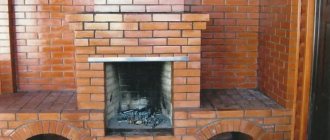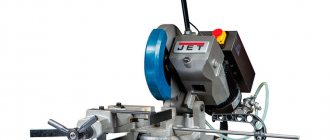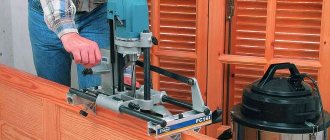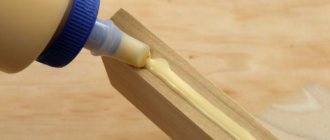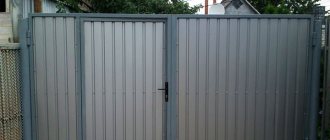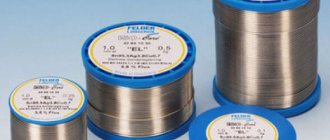In modern interiors of houses and apartments, installed fireplaces serving as decoration are in great demand. For this reason, stoves are given more importance today and are made in different forms.
A heat-resistant paint and varnish material is applied to the finished fireplace or stove. This article will help you figure out why people use this type of varnish for stoves, as well as which varnish is heat-resistant.
Features of heat-resistant varnishes
These products are needed to protect brick stoves, as well as metal parts (doors and dampers) and wooden products located close to fire.
The primary task of any heat-resistant coating is to protect the room from any type of fire. As is known, heat-resistant varnish, when following the instructions for its use, provides the highest level of fire protection. The frozen film cannot be ignited.
By producing gases, it prevents air from entering the product. As a result, wood treated with heat-resistant varnish will not burn due to oxygen deficiency.
Heat-resistant varnish is often used to coat fireplaces and stoves. It is also used as protection on wooden and metal structures, and covers furniture.
In appearance, the varnish looks like a usually clear liquid. Its consistency is thinner than that of paint. After it hardens, a translucent film is formed.
The natural color of the material better decorates the interior item.
Safety precautions
When performing varnishing work, you should take safety precautions:
- The use of safety glasses and gloves is mandatory.
- If the product gets into your eyes or skin, rinse them immediately with running water.
- Do not carry out work near flammable places.
- It is important to ensure good air ventilation.
- To protect the respiratory system, you need to use a respirator.
If a fire does occur, sand or a fire extinguisher will come to the rescue.
Properties of heat-resistant varnishes
The biggest advantage is resistance to temperature changes from -40 to +300 degrees. Heat-resistant varnish for stoves is able to protect the surface from high levels of humidity.
As a result, there are no salt residues on the brick stove, and the wood and stone are free from the spread of fungal spores and mold. Metal parts and structures coated with varnish are not destroyed by corrosion.
Moreover, any heat-resistant varnish is absorbed and hardens in a short period of time than conventional oil paints. After covering in one layer, the surface dries in an hour if the temperature is maintained from +18 to +25 degrees. For better drying, it is recommended to ventilate the room.
In order for the heat-resistant layer to turn out as desired, you will need to cover the area with varnish three times.
Colorless heat-resistant varnish can be colored with colored dyes if desired. In these cases, it is necessary to select products of the same manufacturer and series.
Copper pipes for heating systems: properties and installation features
Among the types of pipes intended for heating devices, copper products occupy a dominant position. Copper pipes are superior to analogues made from other types of metal and plastic in all respects. The only reason why copper pipes have not come into use is their high cost. However, their advantages completely justify the cost of purchase and installation.
The qualities of copper pipes allow them to be used at high pressure and temperature, so this is the best option for a heating system
Method of applying heat-protective varnish
At the very beginning, the composition is mixed well until a single mass is obtained. If necessary, the varnish can be passed through a filter.
It is better to dilute a thick paint consistency with a small amount of water. The liquid ratio in the varnish cannot be higher than 3%.
Afterwards, the surface itself is prepared, it is cleaned of dust and dirt particles, as well as stains. It is recommended to avoid applying paint to frozen wood products. It is not advisable to combine varnish with any paints or solvents.
Recommendations
Before applying paint and varnish material, it is necessary to carefully prepare the surface. It is cleaned and degreased; the composition must be stirred slowly and for a long time to bring it into working condition.
Please note that the varnish must be applied in several layers, this will achieve better adhesion and fully reveal the technical characteristics of the composition.
It is recommended to store heat-resistant varnish in a bottle or any other container in a cool place, away from direct sunlight.
Varnish application stage
Heat-resistant wood varnish is used to coat a surface that is not exposed to water or damaged. Otherwise, the film may collapse, which contributes to low security.
The varnish is applied using a brush, or a roller and spray. When varnishing, smudges should be prevented. By using a sprayer in your work, such troubles can be avoided.
The composition must be applied to the surface in two opposite directions. Thanks to this method, you can get a uniform painting result over the entire area.
Heat-resistant varnish can also be used to treat laminated wood surfaces. In this case, you must adhere to the mandatory rules. So, first coat a small piece of surface with a thin layer of varnish.
After time, the composition is distributed evenly. If everything turned out beautifully, after the area has dried, you can cover the entire remaining area with the composition.
The first applied layer of fire-resistant varnish must be dried for at least 8 hours. Subsequent layers dry in about 5 hours. The temperature in the room should be at least +20 degrees.
Characteristics of varnish brand KO-85
This type of heat-resistant varnish is often used for industrial purposes. It serves as a means of processing heat mains and parts of various structures subject to heating. The price of heat-resistant varnish is basic - varies from 150-200 rubles per 1 kg.
This varnish contains organosilicon resins and a solvent. Thanks to this component, the paint and varnish material has the following properties:
High temperature resistance. The surface coated with this varnish does not lose its characteristic features even at elevated temperatures, reaching up to 300 degrees.
Advantageous temperature range and increased resistance to temperature changes. The varnish can be used at temperatures ranging from -30 to 300 degrees.
No peeling when the service life expires. The homogeneous varnish consistency is quite easy to apply to any surface. At the end of the work, the area will be covered with a brown film of a uniform color.
Rules for safe operation
To avoid the negative consequences of using paints and varnishes, it is necessary to comply with a number of requirements for safe handling:
- Do not allow varnish to come into contact with the surface of the skin, and especially the mucous membranes. To do this, you need to use protective equipment (gloves, masks, etc.). If contact with the body surface cannot be avoided, it is necessary to immediately rinse the affected areas with plenty of water.
- Due to the fire hazard of the varnish, it is prohibited to use or store it near open flame sources until it dries.
- Due to the toxicity of paints and varnishes, work should only be carried out in a well-ventilated area. And even if this condition is met, it is advisable to use devices for respiratory protection.
- In case of varnish fire, you should always have fire extinguishing agents on hand. Foam-based fire extinguishers or regular sand are best suited for this purpose.
Characteristics of varnish brand KO-815
This heat-resistant varnish for bricks is particularly resistant to fire. Therefore, it is used at higher temperatures than KO-85 varnish. For this reason, it is used to coat bricks in kiln equipment.
Which paint composition is characterized by the following operating properties:
- The heat-resistant composition can be used at temperatures from -60 to 500 degrees. This increases the scope of its use.
- The thickness of the varnish layer varies from 20 to 40 micrometers. This allows you to reduce material consumption.
- Heat-resistant varnish is required to use a hot method for hardening. So that the varnish lasts a long time, after its application it is dried using infrared radiation.
What materials are they suitable for?
Modern heat-resistant varnishes are quite suitable for working with the following materials:
- brick (this can be fireclay refractory, decorative or standard brick);
- stone (both natural and artificial);
- ceramics;
- plaster;
- metal (for example, cast iron or steel alloy);
- wood.
It is worth saying more about the choice of heat-resistant composition for wooden surfaces, especially since some stoves and fireplaces may have elements of wooden decor. Particular care must be taken here, since wood without proper protection will catch fire very quickly.
In everyday life, for wooden elements that are not too close to the source of heat and fire, as a rule, they use varnishes that have the second group of fire-retardant efficiency, polyurethane (and polyurethane, as is known, burns only at very high temperatures) compositions for treating furniture and others .
On the other hand, if necessary, you can use a universal heat-resistant varnish, for example, the same KO-85, whose protective properties cannot be doubted. It has the first group of fire retardant efficiency.
This means that the hardened varnish film does not ignite and produces substances that prevent oxygen from entering the inner layers of the wooden product. And the absence of oxygen means the impossibility of combustion.
